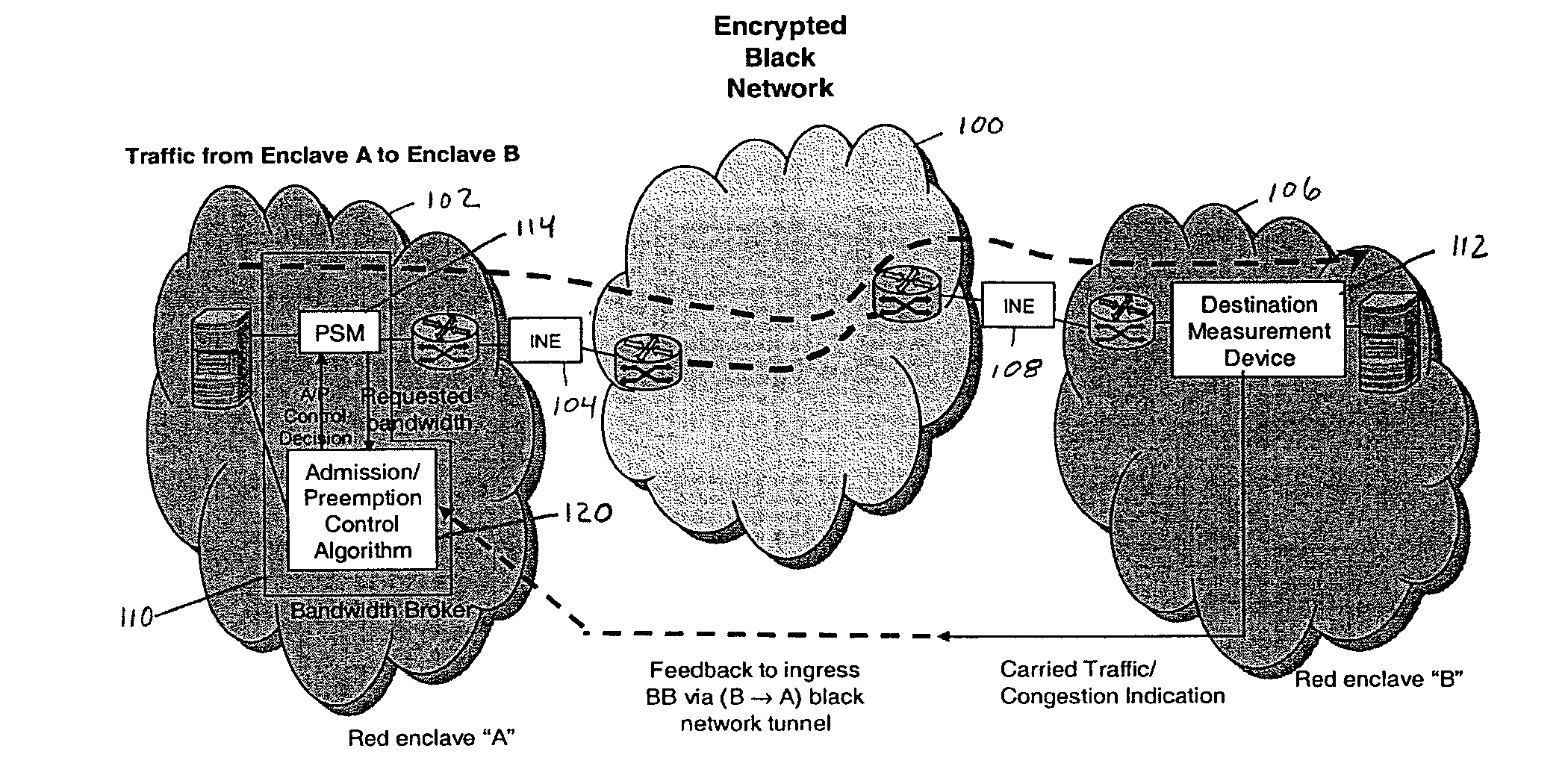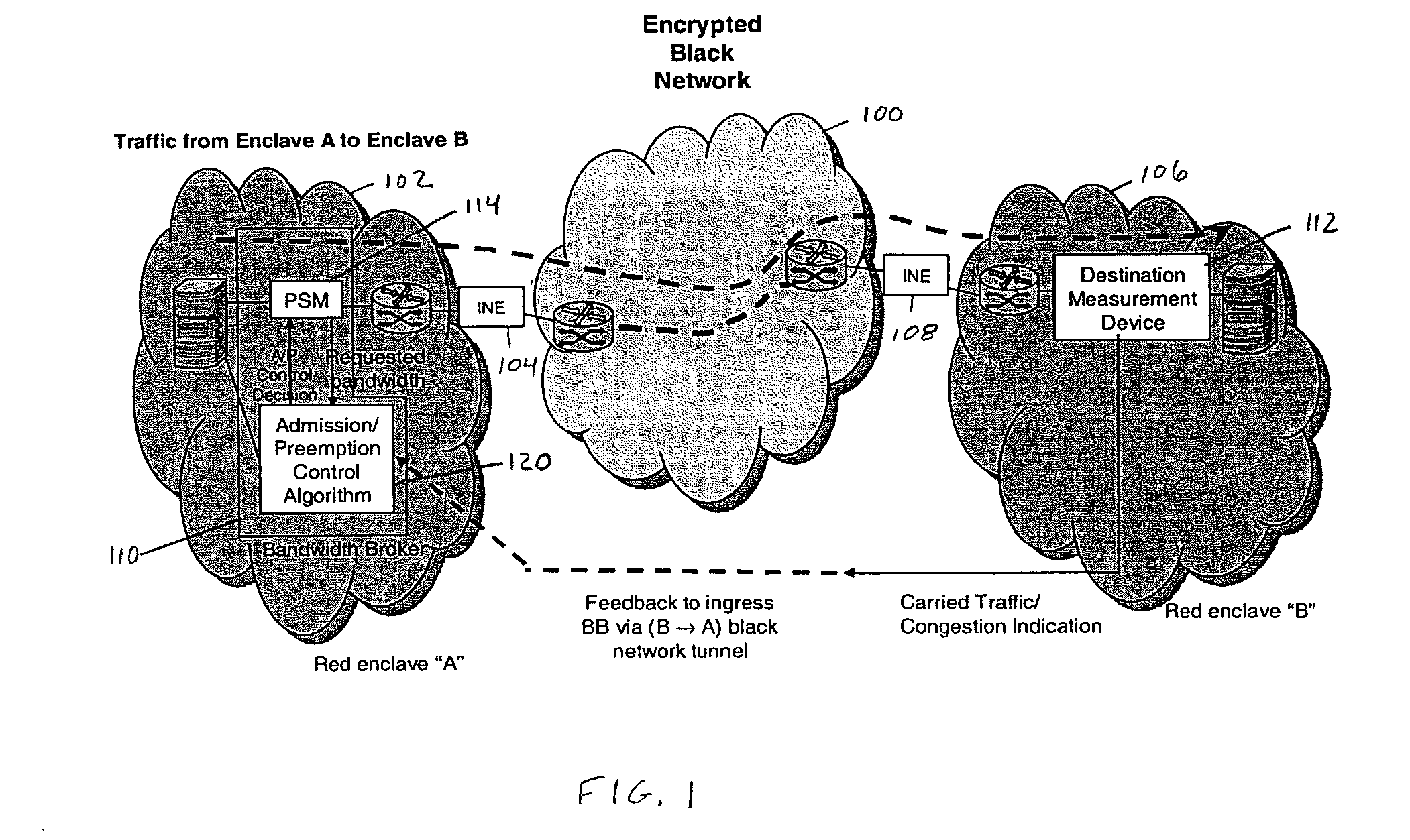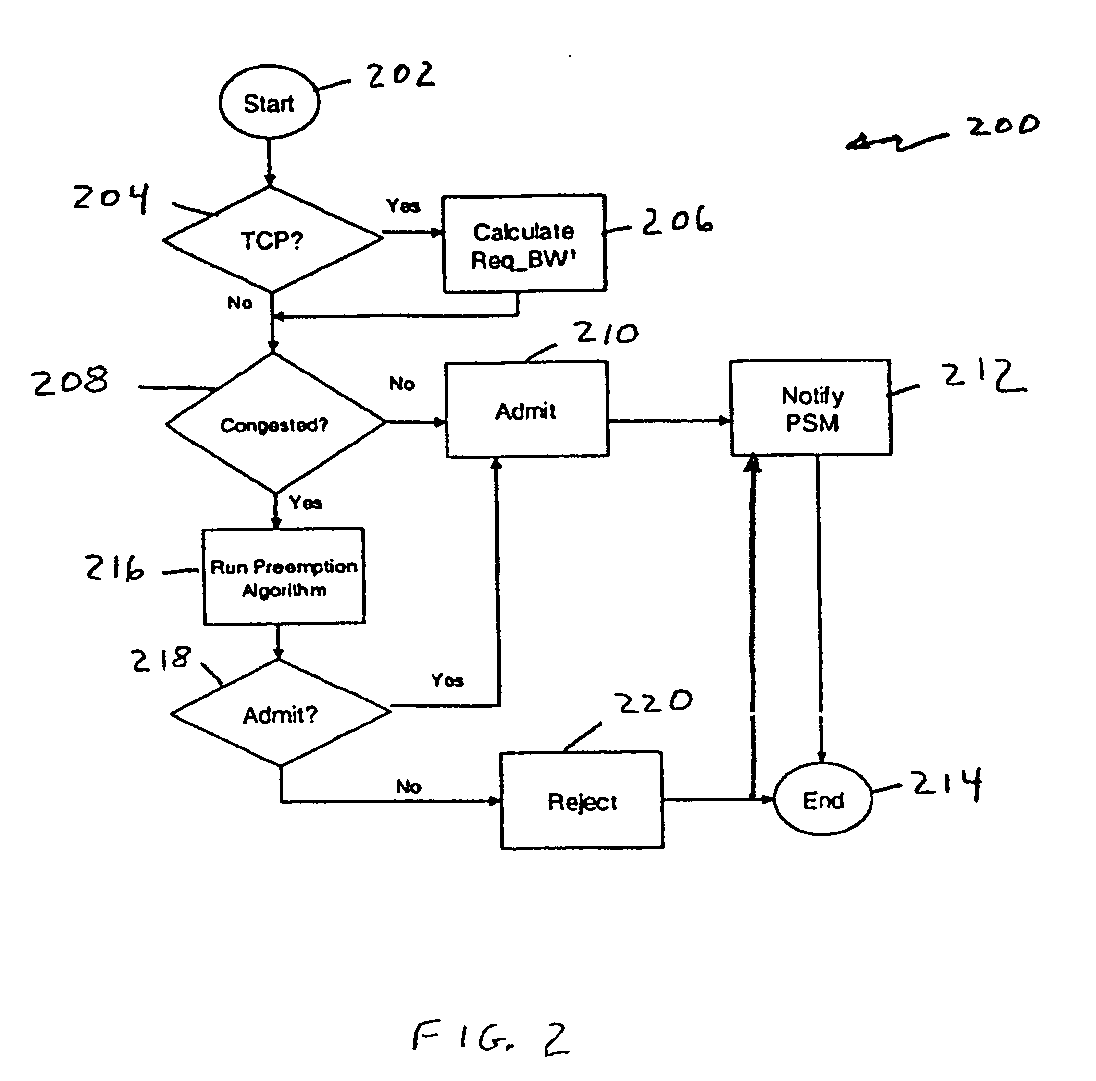Call admission control and preemption control over a secure tactical network
a security network and call control technology, applied in the field of call admission control and preemption control over a secure tactical network, can solve the problems of heterogeneous traffic, difficulty in controlling access to the backbone, and difficulty in achieving the effect of improving throughpu
- Summary
- Abstract
- Description
- Claims
- Application Information
AI Technical Summary
Benefits of technology
Problems solved by technology
Method used
Image
Examples
Embodiment Construction
[0020]Referring now to the figures and to FIG. 1 in particular, there is shown a schematic block diagram of a typical battlefield red / black network using destination measurement. In FIG. 1 the backbone (black) network 100 is a secure (encrypted), wireless network. At the access red enclave “A” network 102, and black network 100 tunnel ingress point and at the red enclave “B” network 106 and black network 100 tunnel egress point, there are respective encryption devices (In-line Network Encryptor) 104, 108. A standard bandwidth broker (BB) structure 110, i.e. before sending traffic into the black network, an application in the red enclave “A” or network 102 makes a request to the BB for the amount of bandwidth needed. The BB runs a call admission control algorithm 120 to determine if the call can be admitted.
[0021]Red enclave “A”102 and red enclave “B”106 are typically wired-line networks, and both are physically confined in a controlled area (e.g. a division headquarter). Hence, ther...
PUM
 Login to View More
Login to View More Abstract
Description
Claims
Application Information
 Login to View More
Login to View More - R&D
- Intellectual Property
- Life Sciences
- Materials
- Tech Scout
- Unparalleled Data Quality
- Higher Quality Content
- 60% Fewer Hallucinations
Browse by: Latest US Patents, China's latest patents, Technical Efficacy Thesaurus, Application Domain, Technology Topic, Popular Technical Reports.
© 2025 PatSnap. All rights reserved.Legal|Privacy policy|Modern Slavery Act Transparency Statement|Sitemap|About US| Contact US: help@patsnap.com



